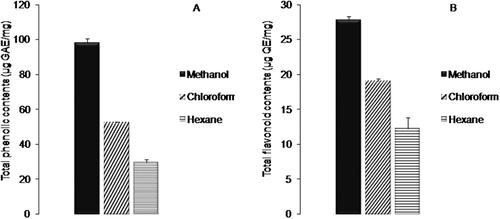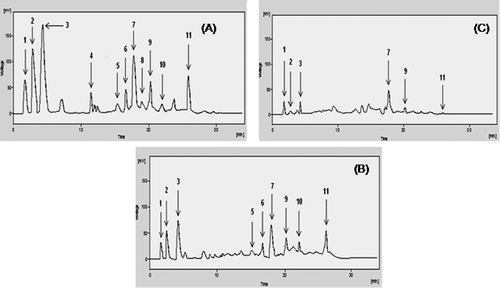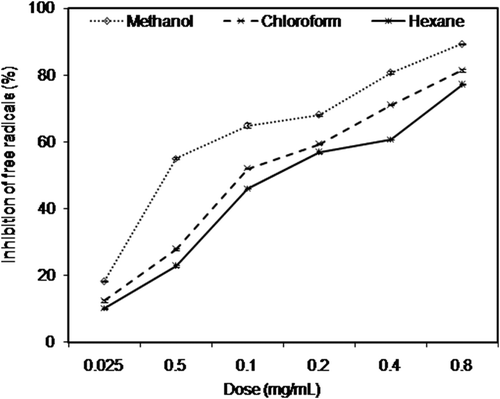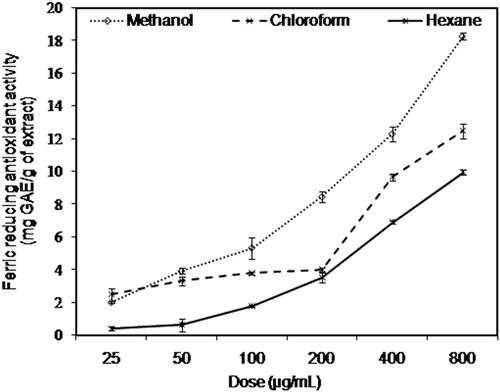Figures & data
Figure 1. Polyphenolic compounds in different solvent extracts of A. rutifolia leaves. (A) Total phenolic compounds expressed as microgram gallic acid equivalent per milligram of plant extract. (B) Total flavonoid compounds expressed as microgram quercetin equivalent per milligram of plant extract.

Table 1. High-performance liquid chromatography (HPLC) study of methanol, chloroform, and hexane extracts of A. rutifolia leaves for identification of polyphenolic compounds.
Table 2. High-performance liquid chromatography (HPLC) study of methanol, chloroform, and hexane extracts of A. rutifolia leaves for identification of polyphenolic compounds.
Figure 2. HPLC phenolic profile of (A) methanol, (B) chloroform, and (C) hexane extracts of A. rutifolia leaves. Peaks: (1) myricetin, (2) quercetin, (3) gallic acid, (4) caffeic acid, (5) chlorogenic acid, (6) syringic acid, (7) p-coumaric acid, (8) vanillic acid, (9) m-coumaric acid, (10) ferulic acid, and (11) sinapic acid.

Table 3. Ferric reducing antioxidant power (FRAP) and free radical (DPPH) scavenging activity of A. rutifolia leaf extracts.
Table 4. Antimicrobial activity of A. rutifolia leaf extracts estimated by disc diffusion assay (mm).
Table 5. Minimum inhibitory concentration (MIC) values (mg/mL) of A. rutifolia leaf extracts and positive controls (µg/mL) against microbial strains.


